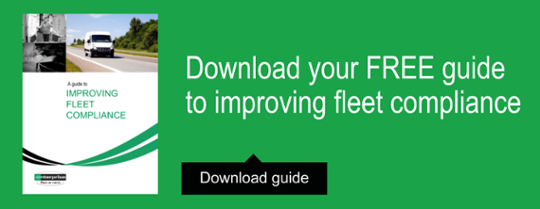Driver distraction is a major problem for the construction industry, and can be a very costly one for your business.
According to the Health & Safety Executive, being struck by a moving vehicle is one of the top three self-reported risks in the construction sector, accounting for some 10% of fatal injuries and 2% of reported non-fatal injuries over the last five years.When accidents like this happen, your business suffers. Even a minor prang can cause construction vehicles to be taken out of action while it is repaired, and if a driver is injured they may need to take time off work. If your driver was distracted at the wheel, you also risk being the target of legal action and being forced to pay significant amounts of compensation to any injured third party.
There’s also damage to your brand that needs considering. If your trucks and vans are emblazoned with your livery, being involved in an accident can be terrible for your reputation.
Smart construction companies try to mitigate the risk posed by distracted drivers by creating a clear written policy on driver conduct, investing in training and education, and employing technology to monitor driver behaviour (whether workers are driving company vehicles or their own vehicles on company business). However, to get such a policy right, you need to know which behaviours to address. To help you, this post looks at the five most common distractions for construction vehicle workers.
Mobile phone use
This is a problem that isn’t confined to the construction industry, but is much too common across all sectors. Aegis Mobility reports that 50% of employees admit to texting or emailing while driving, while the World Health Organisation’s Mobile Phone Use: A Growing Problem of Driver Distraction reported a Swedish study that found that 30% of people talked on their mobile phones as far back as 2011.
Fortunately, technology is now available to prevent mobile phone use while driving in construction vehicles. Once connected to the driver’s phone via Bluetooth, it will lock the screen when the vehicle is in motion, temporarily suppress inbound texts and emails, block access to selected apps (except, for example, navigation apps) and ensure incoming calls can only be answered using a hands-free device. The technology can also gather data about driver phone use, enabling you to enforce your policies on mobile use while driving.
Negotiating site safety hazards
Large construction sites are hazardous places, and drivers can easily get distracted if they are unfamiliar with a site and the position of hazards such as power lines or utilities.
One way to help ensure that drivers avoid these hazards is to use GPS tracking or telematics solutions that alert drivers to their locations. This enables them to drive on sites with minimal distraction, reducing the likelihood of accidents.
Manipulating vehicle controls / technology
This is common to many drivers, and most of us have been distracted as we’ve changed radio stations, opened windows, zoomed in on a Sat Nav or reached for a phone.
There are several ways to approach this type of distraction effectively. Firstly, good driver training will make workers aware of the different distractions that can affect their driving, and encourage them to avoid distracting behaviours. Secondly, modern telematics and GPS systems can integrate many different functions inside a single device – meaning there is no need to juggle separate Sat Navs, phones, clipboards and similar items (and as we’ve seen, these systems can also prevent devices being used for texting, emailing or dialling while on the move). Thirdly, strong policies on the use of radios and other devices while driving construction vehicles can help reduce the likelihood of distraction.
Eating and drinking
The American study referenced earlier found that over 71% of people get distracted by eating, drinking or spilling drinks while at the wheel. This is perhaps one of the most avoidable behaviours to tackle as part of your company policies. Ensure that drivers are trained not to eat or drink while driving, and that they know to park in a safe place before taking a snack break or a meal. You should also ensure that time pressures aren’t to blame for this common distraction by providing regular breaks.
Fatigue
Fatigue causes cognitive impairment and means that drivers are much more likely to get distracted by their immediate environment or let their attention wander as they drive. Ensure that drivers take regular breaks and comply with all relevant legislation regarding the hours they are allowed to spend on the road. Again, you could use traditional tachographs (where fitted) to monitor driver hours, or telematics systems that collect data on driver hours, driving style and performance. Some systems allow for ‘gamification’, assigning drivers a place in a league table based on the safety and fuel efficiency of their driving – meaning you can use a reward system to foster safe driving with minimal distraction.
There are many ways in which workers can get distracted while in their construction vehicles. Strong policies and good training are essential to encourage safer driving, while technology can prevent many dangerous behaviours – and collect vital information on driver performance.
To learn more about improving the safety of your drivers, download a copy of our free 




